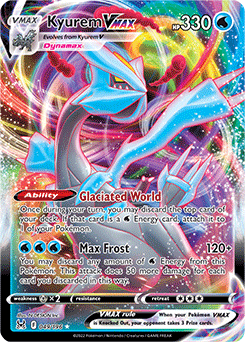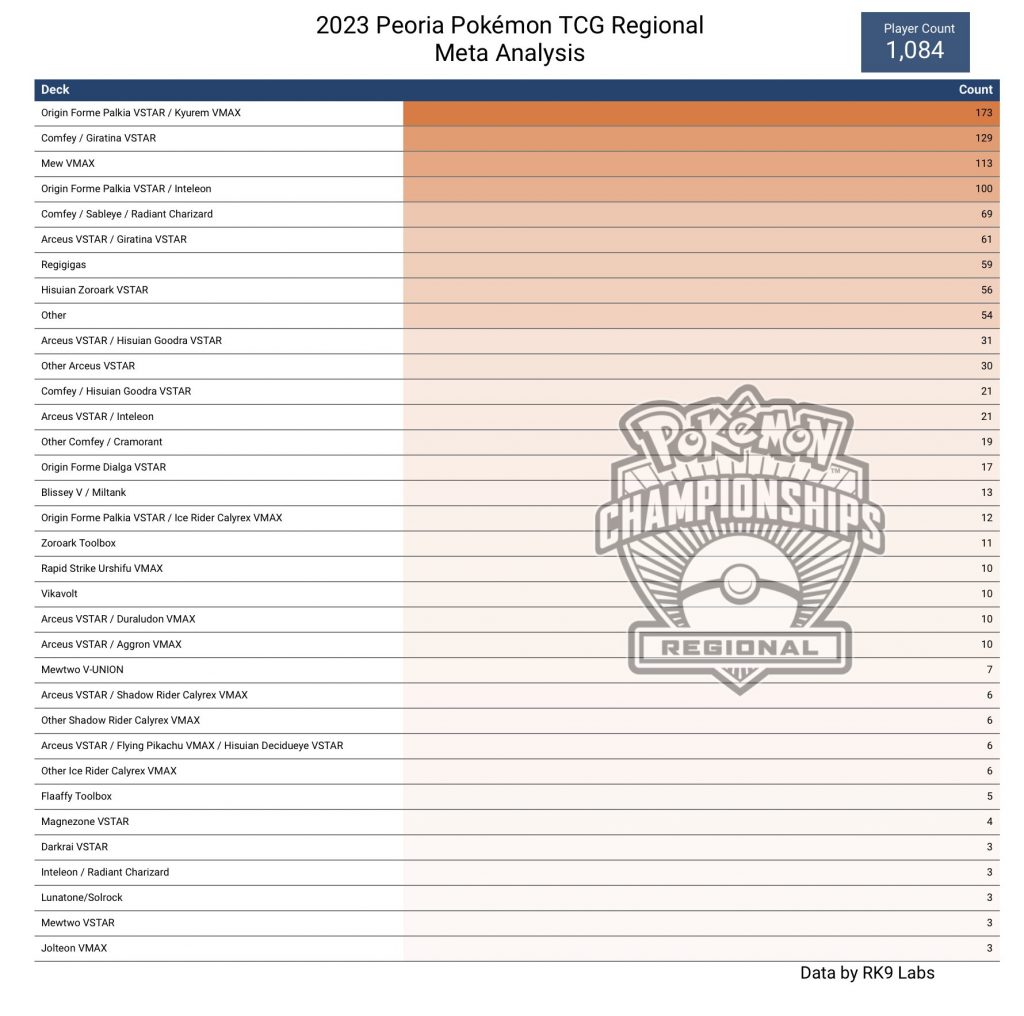From Offense to Defense — The Standard Meta After Peoria
Hello everyone! After a fun-filled Peoria Regional Championships, our picture of the Lost Origin format is starting to come more into focus.
The Peoria metagame was a mix of new Lost Origin archetypes and our existing top-tier decks. Mew VMAX, Origin Forme Palkia VSTAR, Arceus VSTAR, and Regigigas were all back just as in Baltimore, but they were joined by plenty of new Lost Zone stuff, as well as Hisuian Zoroark VSTAR, Hisuian Goodra VSTAR, and my deck of choice, Kyurem VMAX.
In Peoria, that choice worked out quite well for me, as I was able to pilot Kyurem VMAX to a 4th place finish. I played a slightly altered version of the Kyurem VMAX deck that I wrote about in my last article — here’s the list I ended up going with:
My Kyurem VMAX List
Small Changes
I made a few small last-minute changes (quite literally the night before) to adjust the deck for some of the meta I expected, namely adding in a Drapion V to better take on Mew VMAX, a second Wash Water Energy to better take on Lost Zone Giratina VSTAR, and a Marnie, to give the deck some disruption against Lost Box if needed. With the switch of one Water Energy to one Wash Water Energy, I also swapped a Capacious Bucket for an Energy Retrieval, to better offset the lower basic Energy count.
Mew VMAX had been performing quite well for me whenever one of my siblings would want to test into it, to the point that I almost switched over to playing it myself; the Drapion V ended up being somewhat helpful in that regard, as I was able to go undefeated against the Mew VMAX decks that I faced. Indeed, all of the changes ended up paying off at some point or another.

Going forward, I think that Kyurem VMAX remains a strong play, as the reasoning I laid out in my previous article still holds true today. The one thing that this deck may want to consider changing is the strategy against Radiant Charizard Lost Box (the deck I lost to in the semifinals), as the Empoleon V strategy is a bit fragile against the Lost Box decks that play a full four Path to the Peak. One nifty solution is to play a copy of Lost City as Yehoshua Tate did in his 3rd place list or to play healing in the form of Cheryl and Collapsed Stadium. Cutting the Empoleon V does weaken your matchup against Lost Zone Giratina VSTAR and Regigigas, but that may be worth it if you can flip the Lost Box matchup.
Other than that, there isn’t anything I would change from my Peoria list — I was happy with how it played and certainly happy with the results! I’ve already talked quite a bit about Kyurem VMAX, so for the rest of this article, I’ll be instead taking a look at some of the other decks that performed well at the Peoria Regional Championships, as well as what I expect to do well in upcoming events.
The Peoria Metagame
Now that the metagame is a bit more solidified, it’s easier to evaluate how well any particular deck might fit into that meta. We thankfully have the full meta breakdown from Peoria, so we can use that information to both see what was played, and how well each archetype did compared to its meta share. While I would certainly expect people to react to the Top 8 results, with the full meta breakdown, we can dig a bit deeper to get a better picture of what did well — and hopefully figure out what decks might be going under the radar. I’ve included the image of the Peoria meta-data here, courtesy of RK9 Labs.

Looking at the Peoria metagame, the first thing that jumps out is how diverse the meta continues to be. Eight distinct archetypes had a meta share of five percent or more, while a whopping 20 were played by ten or more people. As it turned out though, the most-played decks did end up being the ones that I had predicted you would need to watch out for — I even almost got the order right! So, in that sense, things were as expected, despite the meta-diversity.
When looking forward, this is important — even though we might have a pretty good idea of which decks we’ll see the most, a deck will still have to be able to take on a lot of different decks in order to succeed. In that sense, a pure counter-meta deck won’t quite work; you’ll want a deck that is not only good against the meta but also has strength in a vacuum.
Which Decks Overperformed Their Meta Share?
One good way to find those diamonds in the rough is to look at how well decks did compared to their total meta share in the event. This can tell us not only which decks did better than expected, but can also show which decks underperformed, even if that might not be obvious from the final standings. For example, Kyurem VMAX did quite well, as it got two Top 4 spots, and it was the 4th most represented deck on Day Two. But if we look at the full data, it becomes clear that Kyurem VMAX players actually didn’t do all that well as a whole. Of course, there is some nuance here — decks that were more heavily played by newer players are going to look worse than those played solely by veterans, for instance — but for the most part, this analysis can give us an idea of which decks did the best overall.
This concludes the public portion of this article.
If you'd like to continue reading, consider purchasing a PokeBeach premium membership! If you're not completely satisfied with your membership, you can request a full refund within 30 days.
Each week we post high-quality content from some of the game's top players. Our article program isn't a corporate operation, advertising front, or for-profit business. We set our prices so that we can pay the game's top players to write the best content for our subscribers. Each article topic is carefully selected, goes through multiple drafts, and is touched up by our editors. We take great pride in our program!

